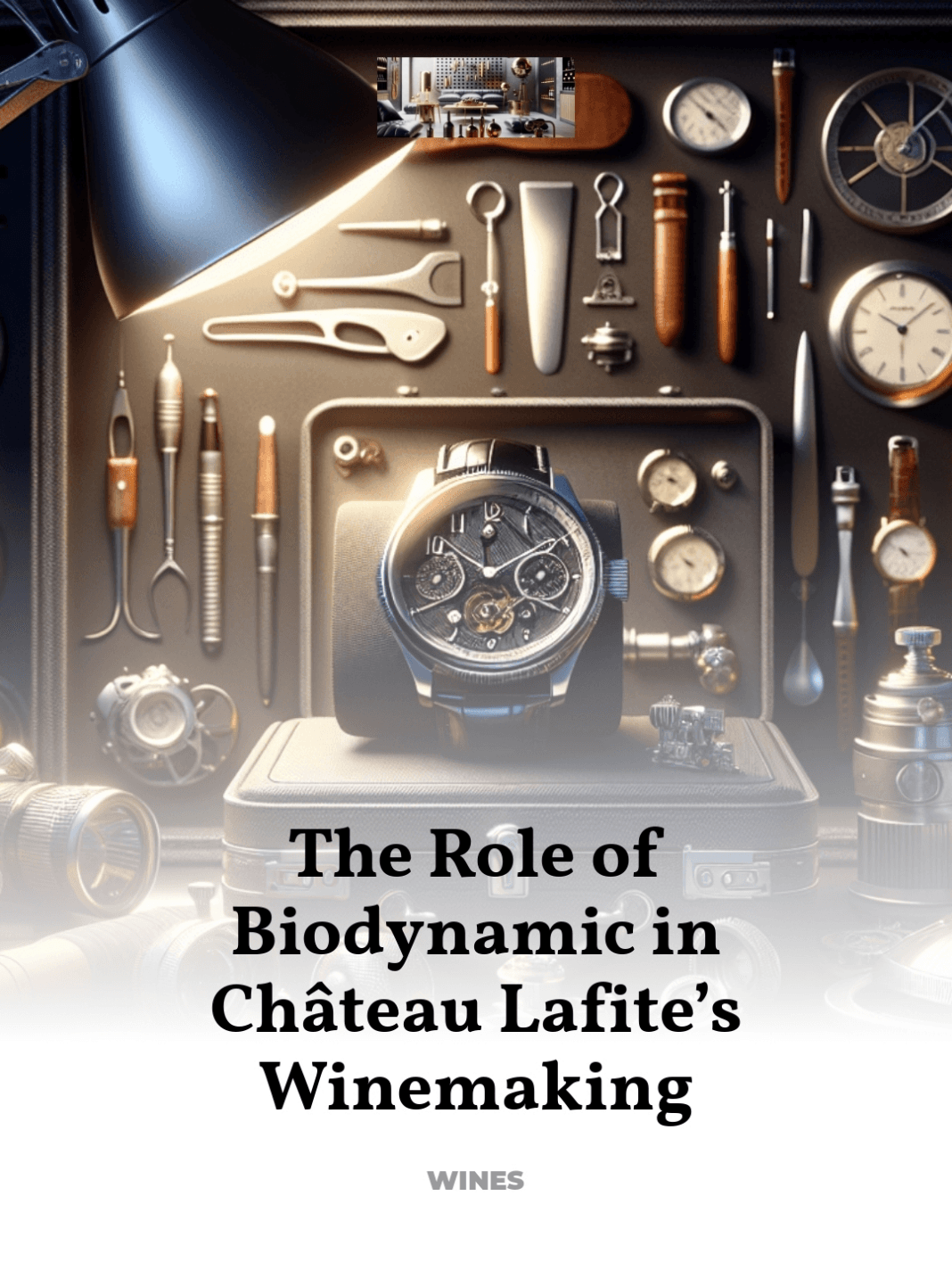The Estate’s Approach to Sustainable Viticulture
Château Lafite Rothschild, a beacon of luxury and tradition in the wine world, stands at the forefront of biodynamic viticulture, intertwining environmental stewardship with the art of winemaking.
- Understanding Biodynamic Principles in Viticulture
- Château Lafite’s Biodynamic Journey
- Impact of Biodynamics on Wine Quality and Sustainability
- Cultural Significance of Biodynamic Practices
- Future Directions and Innovations at Château Lafite
Understanding Biodynamic Principles in Viticulture
Biodynamic agriculture is a holistic approach that treats vineyards as self-sustaining ecosystems. This method, inspired by Rudolf Steiner’s 1924 lectures, emphasizes the interrelationship between the earth, plants, and celestial bodies. Key principles include:
- Use of biodynamic preparations: These natural substances, used as field sprays, enhance soil health and plant growth.
- Observance of an astronomical calendar: Timing agricultural activities according to lunar and planetary cycles is believed to affect plant development and vitality.
- Creation of a closed-loop system: Emphasizing on-site composting and integration of animals to promote a self-sustaining habitat.
These practices aim not only to cultivate grapes but also to invigorate the vineyard, leading to a more vibrant and expressive terroir.
Château Lafite’s Biodynamic Journey
Château Lafite Rothschild, with its rich history dating back to the 17th century, has long been synonymous with excellence in winemaking. In recent years, the estate has embraced biodynamic practices, a decision rooted deeply in its commitment to quality and sustainability. The transition involves: ecological balance
- Training and adaptation: Staff received training to adopt these new methods, ensuring a seamless integration into their existing viticultural practices.
The move towards biodynamics at Château Lafite is driven by a desire to enhance the ecological balance within the vineyard and to express the true character of its prestigious terroir.
Impact of Biodynamics on Wine Quality and Sustainability
The adoption of biodynamic practices by Château Lafite has had a profound impact on both the quality of its wines and its environmental footprint. Benefits observed include:
- Enhanced terroir expression: Biodynamic practices improve soil health and vine vitality, leading to wines that more accurately reflect their terroir.
- Increased biodiversity: The diverse ecosystem supports a balance that reduces the need for chemical interventions.
- Sustainability: Reduced reliance on synthetic chemicals and fertilizers promotes a healthier environment.
These improvements align with the global trend towards sustainability and responsible stewardship, placing Château Lafite at the vanguard of ecological winemaking practices.
Cultural Significance of Biodynamic Practices
The shift towards biodynamics at Château Lafite is not just a technical or environmental upgrade—it is also a cultural statement. This approach resonates with a growing consumer base that values both tradition and innovation in luxury goods. The cultural implications include:
- Preservation of heritage: By adopting ancient agricultural methods, Lafite honors winemaking traditions while ensuring their viability for future generations.
- Educational impact: The estate’s commitment educates consumers and industry peers about the benefits of sustainable viticulture.
- Enhancement of brand prestige: The dedication to biodynamics reinforces Lafite’s image as a leader in quality and ethical production.
This cultural depth adds to the allure of Château Lafite’s wines, enhancing their appeal among connoisseurs and collectors worldwide.
Future Directions and Innovations at Château Lafite
Looking forward, Château Lafite continues to innovate within the framework of biodynamic viticulture. Future initiatives include:
- Research and development: Ongoing experiments with biodynamic preparations and techniques to further refine their efficacy.
- Global influence: Sharing knowledge and practices with other vineyards within the Rothschild family and beyond, promoting wider adoption of sustainable methods.
- Technological integration: Utilizing technology to monitor and enhance biodynamic practices, ensuring precision and efficiency in vineyard management.
These forward-looking strategies ensure that Château Lafite remains at the cutting edge of both winemaking excellence and environmental responsibility.
For further exploration into the world of biodynamic viticulture and its impact on luxury winemaking, esteemed publications such as Decanter’s Wine Archives offer in-depth insights and updates.



